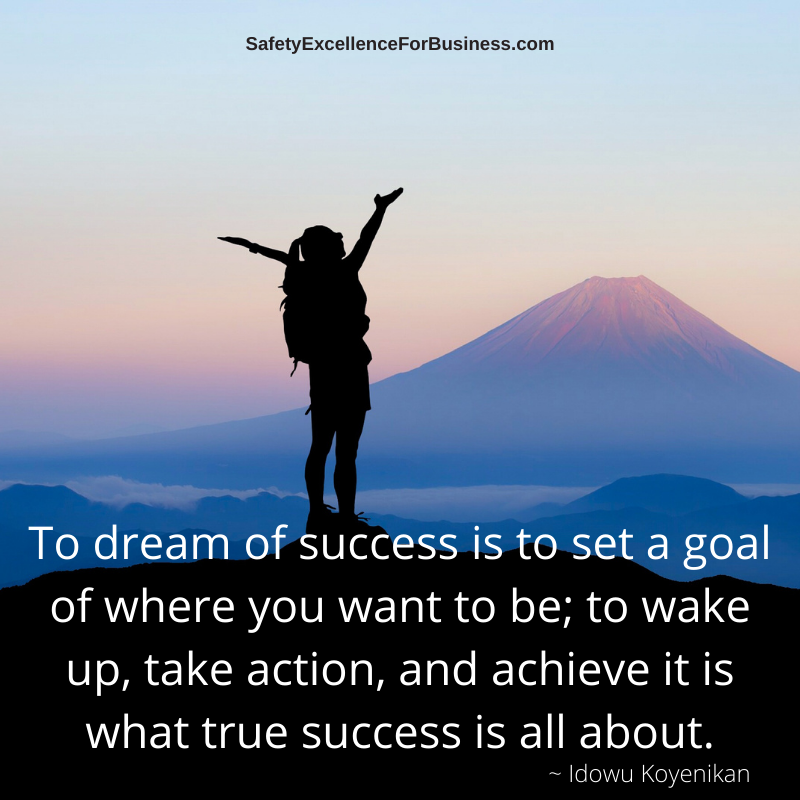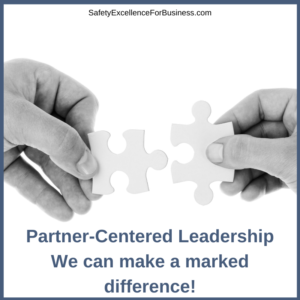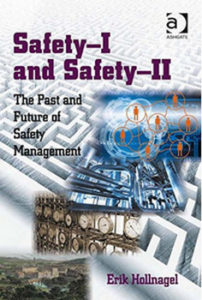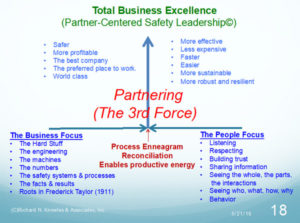Has your organization become forgetful or is it sleepwalking?
A delightful new book by Stephen Capizzano (2020), The Forgetful Organization, has some ideas that really make sense for those of us working to help organizations improve their safety performance and move towards Safety II.
 In this story, a wicked witch puts the princess and the whole kingdom to sleep for 100 years. They all have to wait for the arrival of the prince to kiss the princess and awaken everyone. As children, we all knew this story, but in this new book, Stephen Capizzano shifts the story to thinking about what happens in our organizations.
In this story, a wicked witch puts the princess and the whole kingdom to sleep for 100 years. They all have to wait for the arrival of the prince to kiss the princess and awaken everyone. As children, we all knew this story, but in this new book, Stephen Capizzano shifts the story to thinking about what happens in our organizations.
Are we in our organizations, walking around as if we are asleep? This idea of us walking around as if we are asleep is not new. The ancient Greeks talked about the caves of sleep and drinking from the rivers of forgetfulness. Are we sleepwalking deep in our habits and unaware of things going on around us?
Are we asleep in our old habits that we like and feel comfortable in? Do we like pushing the blame for problems off onto someone else? Do we like doing the minimum required for compliance? Isn’t just enough good enough? Do we really enjoy our dull safety meetings because it is a time for day dreaming about something else? Do we enjoy pushing back when something new comes into the picture like a new training program or improved safety procedure? Do we really love the “same old way?”
As we are sleep walking, 5,250 people died at work in 2018 (Bureau of Labor Statistics). The number of fatalities since 2008 has ranged between 4,800 and 5,250 people a year. Is that a habit we have become used to? The second highest cause of death for women at work is murder (453 in 2018). Is this another habit?
I used to be in the sleep-walking mode until we had a fire at a plant where I was the Plant Manager and I woke up. Maybe that was my handsome prince. Actually everyone woke up. We became a high-performance organization getting the fire out, the repairs made and starting up. Then our old habits reasserted themselves and most of us went back to sleep. But this jolt for me to wake up was so powerful I did not go back to sleep. I went on a quest to find out how we can all breakout of our old habits, stay awake and do extraordinary things together.
In this quest, I discovered many new things and created Partner-Centered Leadership, which I have discussed many times in these newsletters. One key element I found was that people want to be winners. Another finding was that we already know how to work at high levels of performance. We just have to wake up and help each other to shed our old habits. It is not a matter of scolding each other to do better. It is really just reminding each other that we already know how, so let’s do it. When we wake up, we use the natural processes of working together at a high level of performance. We do not need to go to special classes or workshops; we already know how to work this way as the fire crisis showed.
We already know how to:
- treat each other with respect
- help each other
- listen together
- tell the truth
- share information
- say we are sorry when we mess up
- think and develop better ways to do things
- work safely
- remind each other to be our best
The key features for leaders to remember in Partner-Centered Leadership are:
- valuing people, change and the future
- seeing organizations as if they are living systems
- recognizing organizations as complex, adapting, self-organizing networks of people
- focusing on the open flow of information, building respect and trust
- helping people to find meaning in the work itself
 When we were able to shed our old habits at our Plant in West Virginia, injury rates dropped by 97%, emissions to air, ground and water as reported to the EPA dropped 95%, productivity rose by 45% and earnings rose by 300%. As I walked the plant for 5 hours each day we were reminding ourselves to shed the old habits and create a much brighter future.
When we were able to shed our old habits at our Plant in West Virginia, injury rates dropped by 97%, emissions to air, ground and water as reported to the EPA dropped 95%, productivity rose by 45% and earnings rose by 300%. As I walked the plant for 5 hours each day we were reminding ourselves to shed the old habits and create a much brighter future.
We can all make the choice to wake up and create a safer, brighter future. Let’s remind each other and ourselves that we can wake up. We can each become the handsome prince that Stephen Capizzano talks about in his fine book.
Some interesting safety data
The Bureau of Labor Statics summary for 2018 shows that in 2018 there were 2,834,500 Recordable injuries. At an average cost of about $50,000, this amounts to a waste of over $1.1 trillion as well as a lot of suffering and sadness.
COVID-19
Returning to work during this pandemic seems to be the right thing to be doing, as long as we do our best regarding social distancing, wearing a suitable face mask, washing our hands, and keeping our hands away from our face. We also have to give our older people special care to protect them since they have such serious effects if they get the virus. Everyone needs to look out for each other and take the steps to do the best they can to work safely and keep everyone healthy. This is not down-playing the seriousness of the disease, but rather looking at a balanced approach where people also need to work and the businesses survive.
 Artificial intelligence and robots, block chains and bitcoins, the opioid epidemic, political strife, and workplace violence, international worries and potential conflicts are some of the challenges facing all of us. There is a critical need for people, in all walks of life, to come together to openly and honestly talk about our challenges, share our thinking and learn together. We do not have to be blindly swept along. We can make decisions and do the things that we need to do to help to make the world a better place.
Artificial intelligence and robots, block chains and bitcoins, the opioid epidemic, political strife, and workplace violence, international worries and potential conflicts are some of the challenges facing all of us. There is a critical need for people, in all walks of life, to come together to openly and honestly talk about our challenges, share our thinking and learn together. We do not have to be blindly swept along. We can make decisions and do the things that we need to do to help to make the world a better place. When I talk about safety. my thinking goes well beyond the traditional safety numbers, training and procedures. It includes ideas about respect and how everyone has agreed to work together. It includes ideas about personal responsibility, integrity and dedication to helping everyone improve. It includes openness, honesty and sharing information abundantly. It includes ideas about the deeper, often hidden patterns of behavior which have a profound impact on the work environment and drive much of the behavior. It includes the fact that the managers and leaders have the largest impact on their organization’s performance. It includes the understanding that managers focus on reliability, stability, predictability and control as they try to maintain the status quo and that leaders focus on the people, change and the future sharing information abundantly, treating people with respect and helping people find meaning in their work. Both good leaders and managers are needed.
When I talk about safety. my thinking goes well beyond the traditional safety numbers, training and procedures. It includes ideas about respect and how everyone has agreed to work together. It includes ideas about personal responsibility, integrity and dedication to helping everyone improve. It includes openness, honesty and sharing information abundantly. It includes ideas about the deeper, often hidden patterns of behavior which have a profound impact on the work environment and drive much of the behavior. It includes the fact that the managers and leaders have the largest impact on their organization’s performance. It includes the understanding that managers focus on reliability, stability, predictability and control as they try to maintain the status quo and that leaders focus on the people, change and the future sharing information abundantly, treating people with respect and helping people find meaning in their work. Both good leaders and managers are needed. This begins with the leaders deciding to create a culture where it is okay and encouraged that people genuinely talk together, listen, help each other, look out for each other and learn together. This is a culture that helps people to be the best they can be and for the organization to get a lot more profitable. It all begins with all of us treating each other with respect.
This begins with the leaders deciding to create a culture where it is okay and encouraged that people genuinely talk together, listen, help each other, look out for each other and learn together. This is a culture that helps people to be the best they can be and for the organization to get a lot more profitable. It all begins with all of us treating each other with respect. This is the sort of culture that Eric Hollnagel is talking about in his Safety II work, which is intended to move the organization beyond the traditional top-down safety management. (I’ve written about Safety II in previous articles – it is all good!)
This is the sort of culture that Eric Hollnagel is talking about in his Safety II work, which is intended to move the organization beyond the traditional top-down safety management. (I’ve written about Safety II in previous articles – it is all good!)
 In our November Safety Newsletter, I wrote about Partner-Centered Leadership. This is the most effective way to improve safety performance. This way of leading also results in improvements in most other aspects of the business as trust and interdependence are built and the environment is safe for the open flow of information. A key aspect of this is working with the people.
In our November Safety Newsletter, I wrote about Partner-Centered Leadership. This is the most effective way to improve safety performance. This way of leading also results in improvements in most other aspects of the business as trust and interdependence are built and the environment is safe for the open flow of information. A key aspect of this is working with the people.





